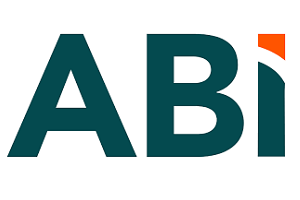After the COVID-19 onslaught, the consumer technologies market saw some recovery due to rising demand from remote working and the need for connected ecosystem. Now there are new overarching issues affecting the global supply chains for many consumer segments namely the war in Ukraine, macroeconomic uncertainties, and the ongoing China-US trade wars. According to global technology intelligence firm ABI Research, these conditions have led to weaker consumer demand, but with technical advancements in artificial intelligence (AI), 5G connectivity, and new form factors, 2023 will be a recovery year for the consumer technology market as improvements drive the future of new generation of devices.
“In smartphones, the replacement cycle followed by the migration to 5G smartphones and eagerness to embrace new form factors like foldable devices will be the main growth drivers for accelerating adoption in 2023. With the rapid increase of AI in various verticals, innovation and use cases will accelerate the growth in end markets for various consumer technology verticals. Business professionals in the consumer technology world must embrace AI to leverage its potential, drive innovation, and gain a competitive edge,” explains Sachin Mehta, senior analyst, consumer technologies, at ABI Research.
The consumer market for robotics is maturing and continue to thrive in the past 6 months, although results from players, such as iRobot, Roborock’s, Eufy, Samsung, and LG, suggest a market adapting to a range of economic and competitive pressures. This comes at a time when there are also some specific concerns about addressing inventory management and reduced consumer spending. Consumer robotics shipments for 2023 will increase 13.6% from 2022, with revenue up 12% from 2022, as competition increases in the key home care robotics market. The total market for consumer robotics and smart appliances will see shipments at 215 million units, up 18% from 2022. Revenue will climb 9.6% to US$141.3 billion (€129.72 billion).
With all this happening around the world, some consumer technology markets like wearables are witnessing a lot of improvements and new use cases in recent years. The overall market for the wearable category is expected to reach 363.10 million in 2022. “Health being the core centre of innovation for the wearable category is pushing vendors to bring more devices with advanced features. The use of advanced sensors and AI based algorithms will be on the rise to bridge the gap between the wearables and health care ecosystem in 2023 and beyond,” Mehta says. The healthcare wearables market is expected to grow to 31.64 million shipments in 2022 to 82.25 million shipments in 2027.
Fixed broadband subscriptions are on the rise and are expected to reach 2 billion in 2027 as connectivity will be an essential part of the ecosystem in the years to come. From smart homes to consumer robotics to the adoption of online entertainment platforms such as video streaming and online gaming, the demand for reliable broadband connection will thrive the growth and innovations in various verticals. Also, 5G network deployments are likely to boost the 5G FWA (fixed wireless access) market targeting the replacement of last-mile fibre-optic connectivity. It is expected that the 5G FWA market will see significant growth with a CAGR (Compound annual growth rate) of 62%, reaching nearly 72 million subscriptions in 2027.
The smart home also continues to transition from delivering individual value to a single home from a single service/device supplier into providing a networked infrastructure with value that will be leveraged by multiple players, multiple users, and beyond the home, to be connected throughout industries, cities, nations, and economies. “Also, in terms of connectivity, Bluetooth will play a pivotal role in the consumer technology market. Bluetooth consumer device shipments will continue to accelerate as the technology continues to be deployed beyond smartphones giving a big push to other verticals like smart homes, wearables and other IoT applications,” Mehta concludes.
These findings are from ABI Research’s Consumer Technologies market data report. This report is part of the company’s Consumer Technologies research service, which includes research, data, and analyst insights. Market Data spreadsheets are composed of deep data, market share analysis, and highly segmented, service-specific forecasts to provide detailed insight where opportunities lie.
Comment on this article below or via Twitter: @VanillaPlus OR @jcvplus






